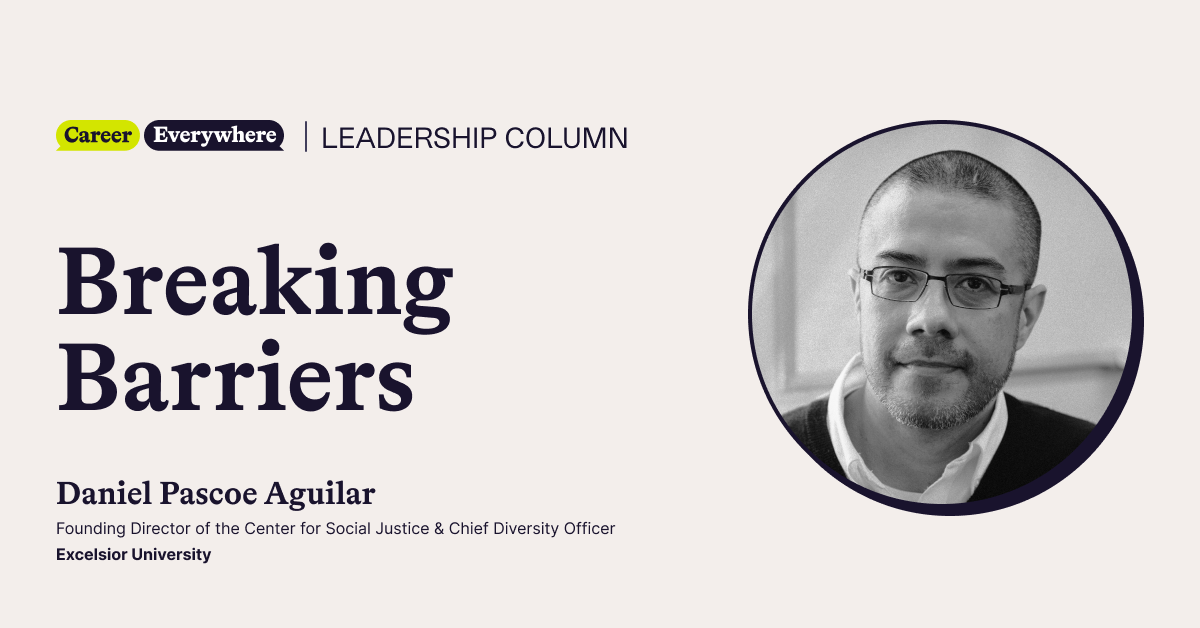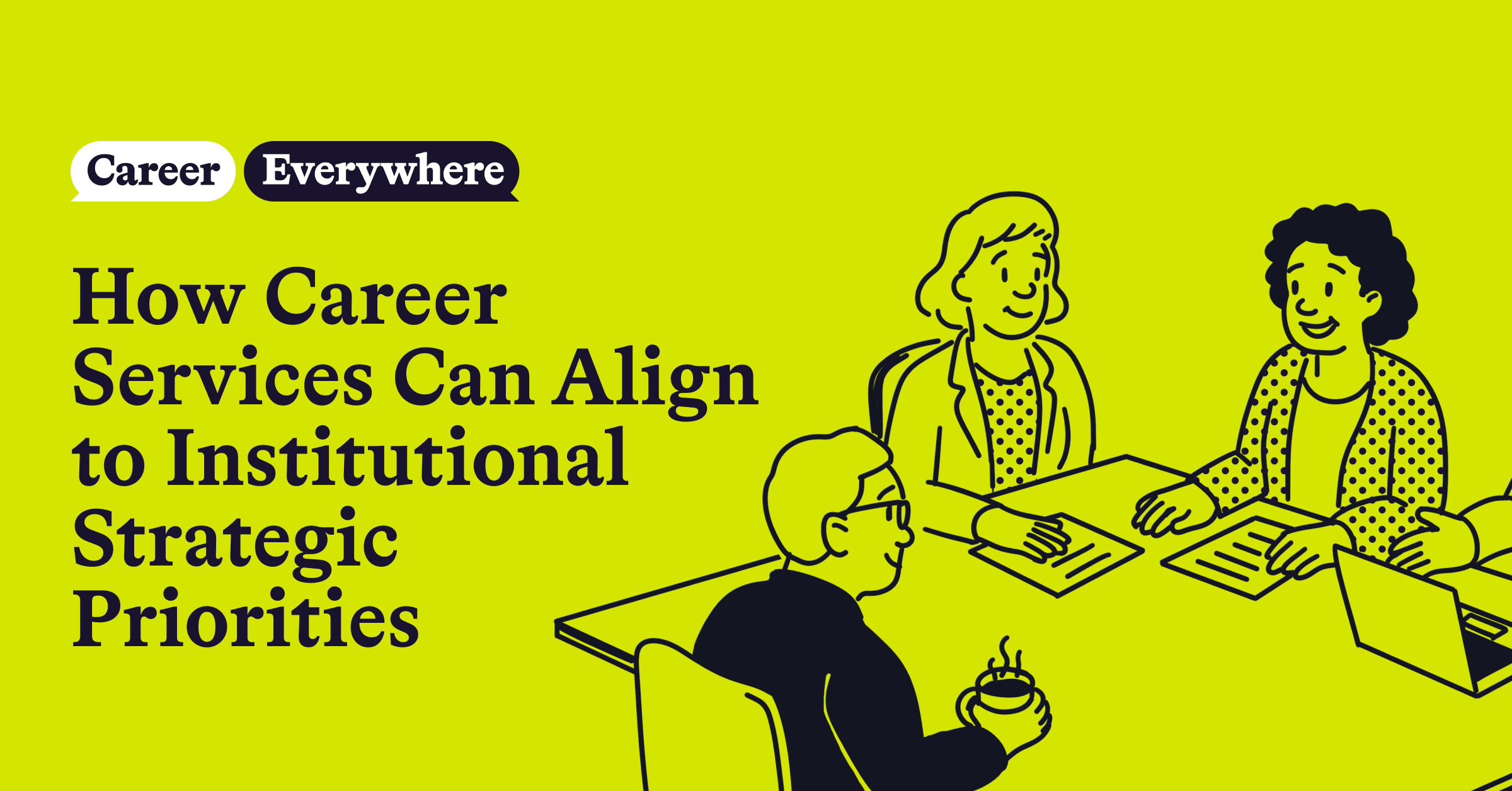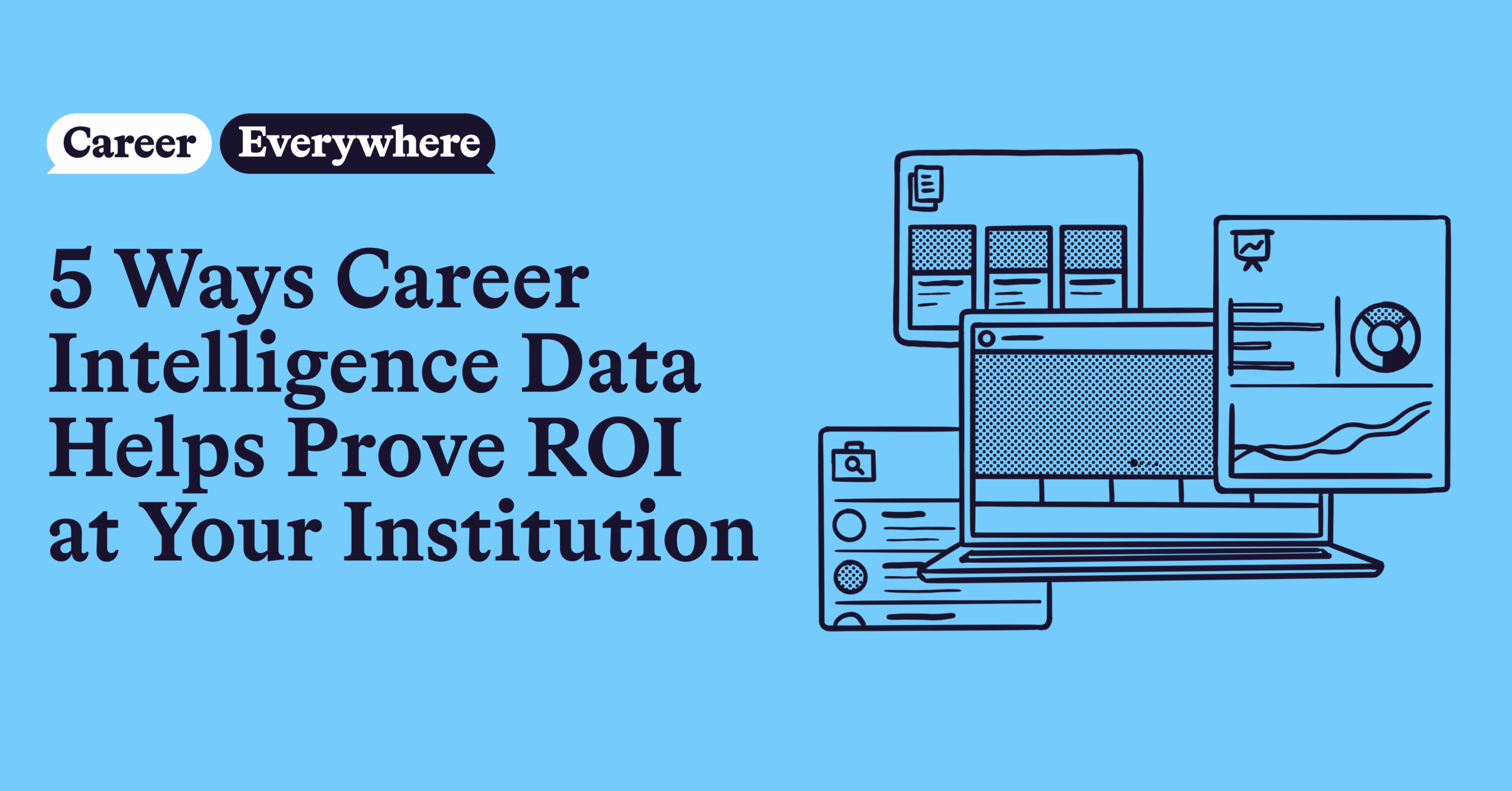
I am honored to have had the opportunity to write 20 columns about our critical systemic leadership in higher education. I wrote my columns based on key foundations of our work that I believe should guide our leadership of the leaders we support. Below I share a selection of relevant themes:
- We are facing a diversity of critical issues we are clearly struggling to solve, most of which have become systemic. They are no longer local, affecting only one or a few institutions, communities, or countries; they are impacting all of us. These unresolved issues are so big and have been so neglected that they have become crises, crossroads of our existence, and they are beginning to fall on the shoulders of the next generations: the students we serve, the students with whom we work, the leaders who will determine our ability to survive, and hopefully to thrive, as a human race and as a planet.
- If we believe we are in the business of scaffolding or facilitating the preparation of our next generation of leaders, then we must assume the responsibility of this critical task as one of our most important societal endeavors and as one of our most important institutional goals, which should never be delegated to any one person, department, area, division, or even institution. We should see our leadership as institutional and community-based, not only divisional or departmental. The solutions our next generation of leaders need to generate must be systemic. Subsequently, we must lead systemically. We ought to assume an organizational and community leadership role and engage and work with everyone within and beyond the institution.
- Whether we use philosophical frameworks or introspective exercises like the ontology, epistemology, axiology, and methodology constructs or the book-about-your-life exercise I introduced in my second column to help us identify our leadership paradigm, we must approach our work with as much authenticity, focus, accuracy, and transparency as possible by reflecting on our “why.” We ought to start by considering where we come from, what is true to us, what is worth our investment, and how we want to accomplish it, or reflect on what would be the chapters and title of the book about our life or leadership.
- Research argues that how much we value and leverage the diversity of experiences, perspectives, purposes, and approaches of the human systems we lead impacts the effectiveness of our efforts. For instance, Catalyst’s published metastudy findings on the positive impact valuing and leveraging diversity has had on organizational talent, innovation, group performance, financial outcomes, reputation, and responsibility.
- Our collaboration with key stakeholders in our systems is complex. In order to further involve them in our systemic leadership efforts, we need to meet them where they are, focus on their interests and the fence-sitting opportunities these pose to further engage them, and work with them to facilitate their self-motivated transition into a stronger collaboration with us.
- My experience working with Block’s “opponents” (i.e., stakeholders of our system with whom we share trust but not agreement) I introduced in my third column has taught me that effective leadership must think of opponents as the most important stakeholders with whom we need to collaborate. Moving away from our natural tendency to consider consistent or fundamental disagreement as a challenge to overcome, we must focus on the trust we share with opponents to find ways of leveraging our disagreement. If we believe that a key opponent in our system shares our passion and devotion for the preparation and success of a diverse, authentic, purposeful, and ready next generation of leaders, we are responsible for seeking and working with them to develop a joint approach or strategy, to the extent that they feel ownership of it, to lead together our systemic work.
- Another takeaway from my reflection on Block’s model, specifically its “allies” construct I discuss in my sixth column (i.e., stakeholders in our system with whom we share trust as well as agreement) is that we can only get the most out of our allyship with a key partner if we intentionally push each other to collaborate with opponents. We must always intentionally seek the unique perspective of those around us. Uncontested allies run the risk of becoming “fans” (i.e. those with whom we share agreement but not trust) and missing the learning, growth, and intelligence we are responsible for leveraging for the inclusivity and effectiveness of our systemic leadership.
- If we agree that whatever we solve or design through true collaboration with other stakeholders of our system, particularly those who disagree with or think differently than us, will always be stronger than what we decide or do alone, then we must believe in and therefore seek the power of our system’s collective definition and ideation. I discuss this in my design thinking columns (seven, eight, nine, and 10). Collective definition allows us to perceive and understand the complexity and multi-dimensional nature of the issues we face before acting on them, from the key, diverse perspectives and experiences of the members of our system. Collective ideation allows us to generate and then prototype solutions or innovations that strategically take into account and accurately respond to the needs and potential of our system’s diversity. Collective definition and ideation are key phases of the design-thinking process of our systemic leadership. They strategically precede prototyping and testing as prerequisites of the readiness and accuracy of our solutions and innovation. They ensure the greatest potential of our efforts and should be key to the effectiveness or improvement of our work.
- Prototyping and testing facilitate two powerful modi operandi that could be key to a culture of inclusive problem-solving and innovation. The first one is the understanding that what we do and the solutions and innovation we pursue must not be static; they need to be dynamic. If our students, ecosystems, market, and field are constantly evolving, our solutions must be evolutive by design, and they should be created for the purpose of testing them for their constant review, improvement, or substitution. Second, effective prototyping and testing require each prototype to include transparent criteria and a timeline for its assessment. This approach, particularly if followed by the empathy and collective definition and ideation phases discussed in my seventh column and eighth column, provides the diversity of members in the system with two powerful opportunities and assurances:
- The strategy will be as effective as the collective and diverse intelligence of the system, making it the best at the moment and one designed for its timely correction, adaptation, improvement, or replacement as necessary—thus maximizing its quality and accuracy.
- The strategy will consider the diverse input shared in its collective definition and ideation—including its testing criteria—in a way that, even though not all input could possibly be incorporated into a prototype, all voices remain at the decision-making table to be resurfaced and reconsidered as the testing criteria are assessed at a predetermined time. This scenario contrasts sharply with eliciting the diversity of perspectives and ideas in the system but ending in a long-term or permanent strategy that could only afford to include some of the input shared by stakeholders, leaving many feeling unheard and likely disconnected from the solution.
- Fundamentally, design thinking is a systems approach to the design process, so its strength is not in the phases of the model, but in their interconnections, interrelationships, and interdependencies—and in our ability to see and mutually leverage the parts, processes, inputs, and outputs of the human systems we lead. Whether you’re working with allies, opponents, fans, or adversaries as we discussed in my third, fourth, fifth, and sixth columns, we are strategically attempting to lead systemically through a design thinking approach. We must conduct comparative assessments of what participants and their perception of what those affected might say, do, feel, and think of your collective definition and of the solution or innovation you are considering. We ought to debrief and focus on input that points to gaps, missed perspectives, or new opportunities, and work on developing outcomes that are as inclusive, collectively intelligent, and effective as possible.
- The Bánáthy’s system analysis lenses I discuss in columns 10, 11, and 12 (i.e., our system’s still picture, motion picture, and bird’s eye view lenses) can be a powerful strategy to enhance our understanding, design, and facilitation of the systems we lead. Investing time, thought, and energy in the interdependencies of their parts, components, and/or stakeholders; in the processes, interrelationships, and interdependencies between the parts, components, and/or stakeholders of the system; as well as in its subsystems, sister systems, and suprasystem and its corresponding inputs and outputs can be critical to the accessibility, equity, effectiveness, and impact of our work.
- Our leadership cannot miss the impact that instances and patterns have on relationships and the power that focusing on these relationships, intentionally beyond their instances and patterns, has on the professionals we lead. Instances count, patterns matter, but the support and trust that a meaningful relationship builds in the experience of our team members have the power to become a catalyst to the systemic leadership each of them needs to own. Our interaction with the leaders we have the privilege to lead should focus on the instances of their efforts, but importantly also on the patterns and relationships of their work and of the systemic support and trust we offer them.
- Diversifying the means of engagement for the learning and development experience of the leaders we lead is a responsibility of our leadership. According to the Universal Design for Learning or UDL model I discuss in columns 13, 14, and 15, this helps us engage the learner in the why of their learning and, in this case, of their leadership. We know that purpose is a catalyst of leadership and that without an intrinsic and shared why of our leadership, success is often too steep a journey. So, to develop purposeful and motivated learners, UDL recommends diversifying the learner’s means of engagement in three key ways: a) facilitating their access to engagement, b) facilitating their building on engagement, and c) facilitating their internalization of their engagement.
- Scaffolding the diversification and quality of the resources and knowledge on which the leaders we lead anchor their efforts is a responsibility of our leadership, as I discussed in column 14. According to UDL, this emphasis of our leadership can enhance the inclusivity, authenticity, accuracy, and intelligence of the “what” or the content the team members we serve access for their learning and development, and for their leadership and work. We know that the diversity and quality of our resources and knowledge are a catalyst to the effectiveness of our leadership and that their absence, inaccuracy, or our lack of access to them could put our success and/or the success of those we serve at risk.
- In addition to diversifying the means of engagement and representation of our team members, as we discussed in columns 13 and 14, UDL principles suggest that facilitating the diversification of the actions, expression, and executive functions the leaders we lead access to perform and lead is our responsibility as leaders as it can enhance the inclusion, authenticity, ownership, and intelligence of the “how” or the strategies the team members we serve pursue for their learning and development, and for their leadership and work. To facilitate the development of strategic, goal-oriented learners or leaders, UDL recommends facilitating the diversification of their means of action and expression in three key ways. This involves scaffolding the inclusivity, authenticity, and ownership of a) their actions and applications of their learning and ideas, b) their expression and communication of their perspectives and innovation, and c) their goal-setting, planning, prototyping, and testing
- Pursuing the distributive, historical, developmental, and contributive justice concepts I explore in column 16 has further become a critical responsibility of our leadership and work. Creating environments to which every member of our communities has access and in which everyone, particularly our students, feels safe and empowered to show up authentically and to contribute their story, voice, and brightness, regardful of who they are and regardless of our comfort with or ability to understand their uniqueness, is not only our moral responsibility; it is also a key strategy to the success of our shared mission: Facilitating the preparation of a diverse, engaged, authentic and ready next generation of leaders with whom we can collaborate to build a better future.
- In columns 16 and 17, I shared Verschelden’s work on the “bandwidth tax of uncertainty” with which underprivileged learners and their families and communities live and which they have to survive every day. The constant threat, lack of access, and overwhelming uncertainty they have and/or continue to experience inevitably challenge and thus limit their capacity to function at their full potential, cognitively, affectively, and physically. As leaders of leaders, we are responsible for learning about and responding to the experiences and impact that lack of privilege, limitation of resources, inaccessibility to opportunity, ongoing threat, or direct discrimination has inflicted on and impacts daily the lives of members of our teams.
- Based on Thomas and Kilmann’s conflict management constructs I discussed in columns 18 and 19, as leaders of leaders of our critical institutional and societal charge, we are responsible for observing avoidance or withdrawal approaches to conflict management in our teams and their members. If we pay attention to the vast research on the impact that leveraging the diversity of perspectives, ideas, and skills our teams bring to our leadership, decision-making, and performance, we should invest time in eliciting and learning about the voices, values, experiences, needs, and insights of the leaders we lead. We must figure out ways to make these rise to the surface for the effectiveness of our work. We ought to empower the leaders we oversee to show up authentically and to share and integrate their experiences and perspectives into our efforts. We cannot assume that if their voice is not present it does not exist, or that if their voice is not rising to the surface it does not need to be elicited.
- Another takeaway from Thomas and Kilmann’s model is that our leadership response to disagreement or friction in our teams always benefits from a careful balance of empathy and assertiveness. Timely and decisive assertion is a healthy and often necessary aspect of successful leadership. However, not assessing the threat of non-empathic assertiveness, or of direction that neglects the voices or stories of the leaders we are responsible for leading, could ignore the intelligence around us, and, worse, could become an oppressive force in our ecosystem. As leaders, we are responsible for approaching conflict considering the inevitable lack of psychological safety in our organizational structures, hierarchies, or culture, or the distributive, contributive, historical, or developmental injustice members of our teams might have experienced throughout their journies or could be currently encountering, including in our own ecosystems.
If we believe we are in the business of scaffolding or facilitating the preparation of a diverse, authentic, engaged, and ready next generation of leaders, then we must assume the responsibility of this critical task as one of our most important societal endeavors and as one of our most important institutional goals. We must lead systemically and engage everyone within and beyond the institution.
Research argues that how much we value and leverage the diversity of perspectives, experiences, ideas, and skills of the human systems we lead positively impacts our organizational talent management, team innovation, group performance, financial outcomes, and institutional reputation and responsibility—all of which matter deeply to the survival and success of our higher education institutions.
Our engagement with the diversity of stakeholders in our ecosystems is complex but critical to the effectiveness of our efforts. In order to further engage them in our systemic leadership efforts, we need to meet them where they are; value, elicit, and leverage their stories and voices; and work with them to facilitate their self-motivated collaboration with us, to harness the collective intelligence our ecosystem and to pursue our charge responsibly, purposefully, and diligently.


